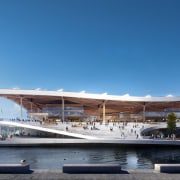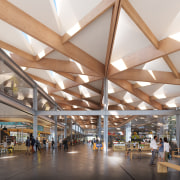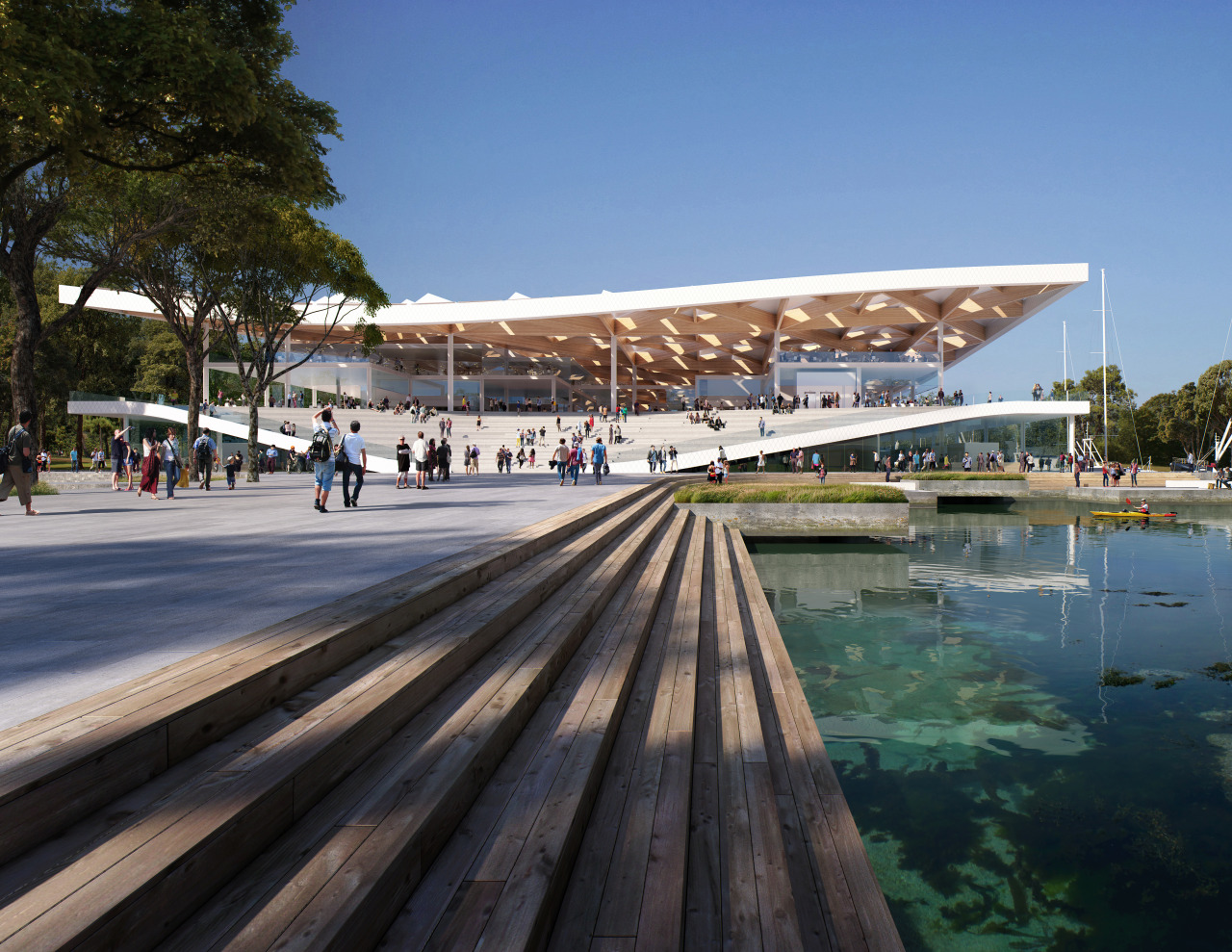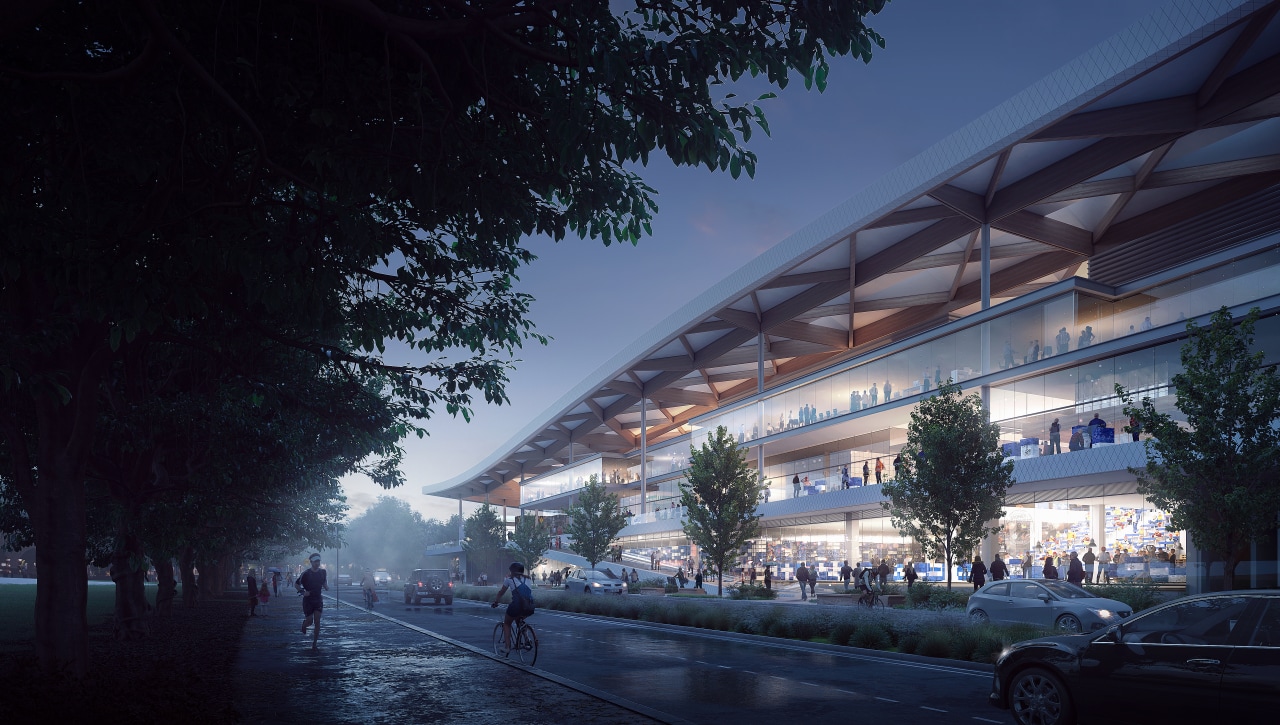Ambitious design for the new Sydney Fish Market gets the green light
Envisioned as an icon for the city, the new Sydney Fish Market will be the largest in the southern hemisphere and will act as a major public and cultural destination
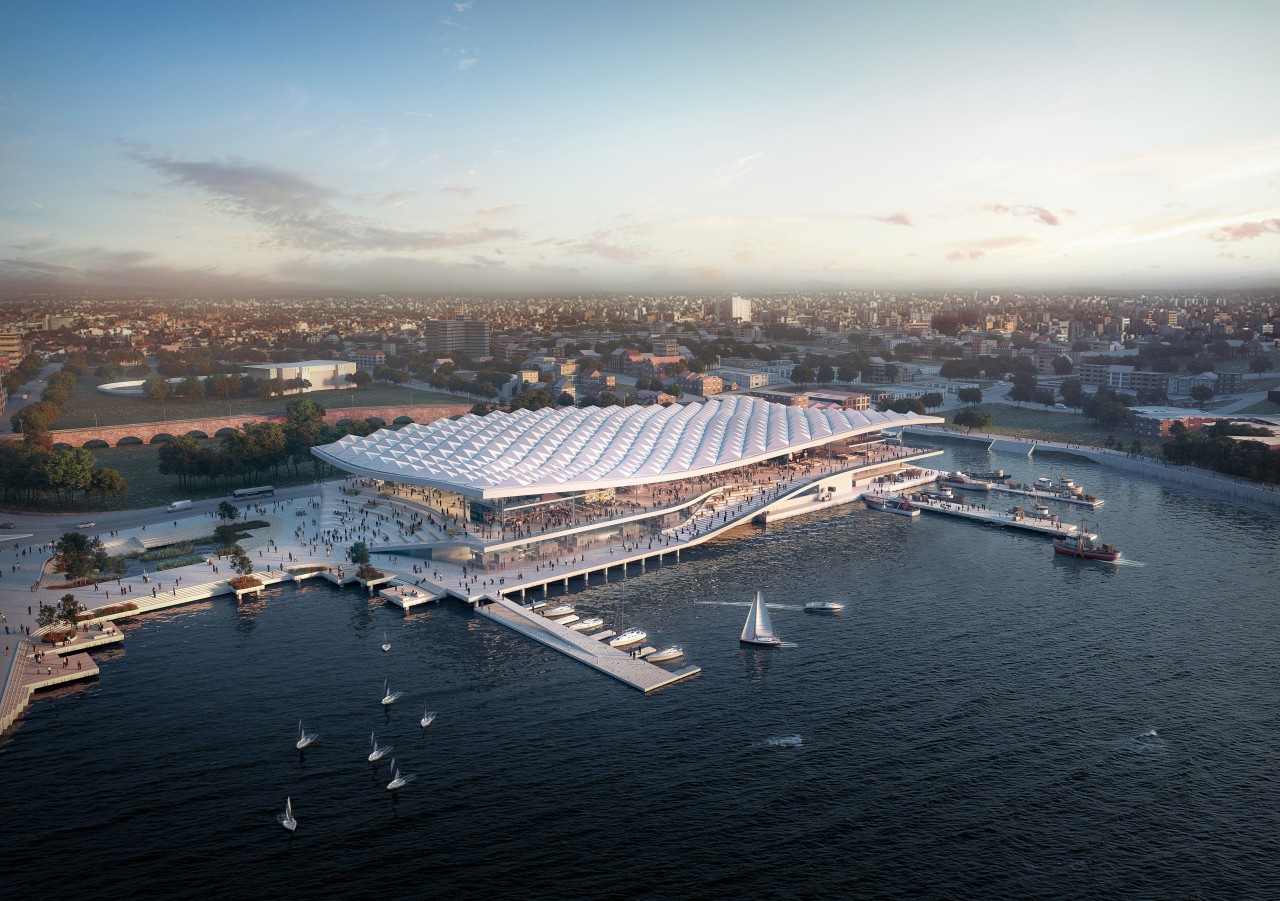
The new 65,000 m² Sydney Fish Market has been given green light from the NSW Government, thus paving the way for construction on the site to begin within the next eight weeks.
The project was approved through the NSW Government’s new Planning System Acceleration Program that is fast-tracking planning assessments, introduced as part of the governmental response to the COVID-19 pandemic to keep people in jobs and the economy moving.
Adding new qualities to Sydney’s public waterfront
The new Sydney Fish Market, which is designed by award-winning Danish architecture firm 3XN in collaboration with local architect BVN, GXN Innovation, and landscape architect Aspect Studios, is the first step in an ambitious plan to revitalise Sydney’s Blackwattle Bay. The landmark building will operate as a working market while simultaneously establishing a public connection to the water’s edge at Blackwattle Bay.
“This building will serve many functions when it is completed: a vibrant fish market, an attractive amenity for the city, a cultural destination, an urban connector, and an inspiring icon along the world-renowned Sydney Harbour,” explains Kim Herforth Nielsen, Founding Partner and Creative Director, 3XN.
Place-making fosters community
In designing this project, 3XN was inspired by the traditional market archetype, which appears throughout history and across cultures.
“The market is the social hub of cities around the world; it is generally comprised of a series of open-air stalls that are covered by a canopy and located in a large plaza. Preserving the authentic market feel is a key objective of this new building. The design focuses on maintaining a human scale with a true market atmosphere,” says Fred Holt, Partner in Charge, 3XN Sydney. The new fish market preserves the intimacy and flexibility of open-air stalls united under a single sweeping canopy that characterises its iconic form.

Environmental and social sustainable design
Throughout the course of the new market’s concept and design development, public amenity and environmental sustainability have formed the core of our decision-making processes. According to Nielsen, “the goals for the design include a significant reduction in energy, water consumption and waste when compared to the existing fish market.
The building’s roof is an integral aspect of the fish market’s iconic design but also its overall sustainability strategy. Shaped to respond to the spatial demands of the program below, it also harvests rainwater for reuse, protects the retail spaces from the sun, and filters daylight for operations below.
The unique form uses prevailing winds to extract hot air and protects the sellers from southerly winds. The canopy, made from timber and aluminium is designed to be as permeable as possible, minimising the need for air conditioning, while also deflecting direct sunlight.
The new fish market maximises its water recycling potential through a combination of rainwater harvesting and grey water recycling, bio-filtration, and mechanical filtration and sterilisation for the use in daily operations like washdown. Biological and mechanical water quality systems are an integral part of the design of the new fish market, focused on conserving this valuable aquatic resource.
The waste systems employed in the new fish market aim to recycle industrial food waste. A comprehensive strategy for recyclables will be instituted and managed to optimise consumables and the fish market will reprocess materials used in packaging and operations.
A tender process is underway for the major construction phase, which is expected to start in early 2021. The new building is expected to open in 2024.
Story by: Trendsideas
Photography by: 3XN
Home kitchen bathroom commercial design


